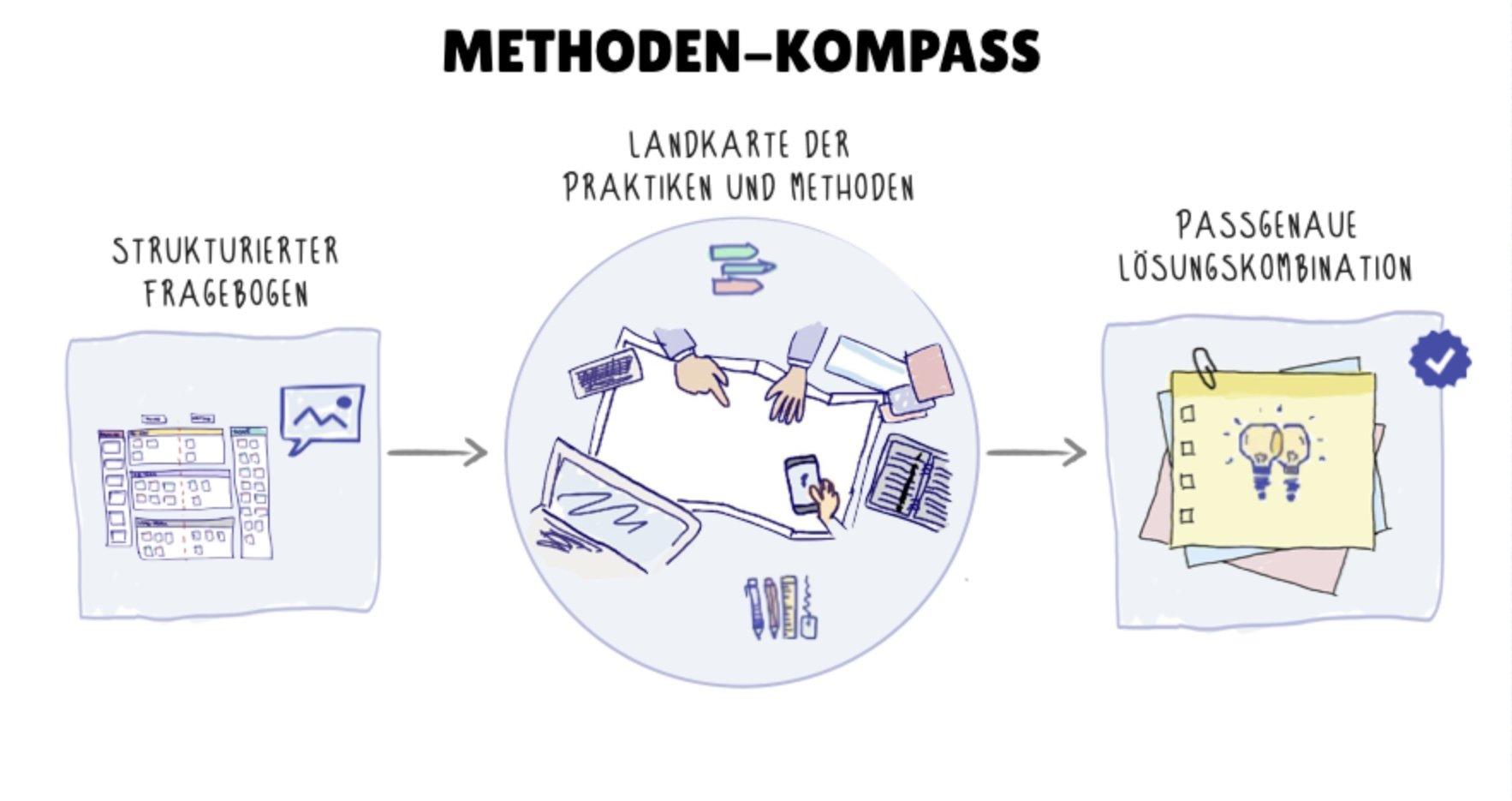
Your Navigator Through a Sea of Methods
New Paths for Collaboration
Strengthening Personal Competencies
Solution Development in Groups
Each of these fields has its own objectives, yet they do not stand isolated next to each other. Often, they complement one another. Effective collaboration requires learning organizations. Good solutions emerge where people take shared responsibility.
Three Areas, One Ambition
Typical Questions
Which development goals take priority?
Strategy? Collaboration? Change? Conflicts? Innovation ideas?Which principles provide guidance?
Which practices promote collaboration?
Which routines strengthen the team in daily work?
How does genuine participation emerge in the process?
The Challenge:
A Plethora of Methods
The possible toolkit is extensive:
Agility, New Work, coaching, organizational development, classic HR instruments—and nowhere is it prescribed which method is meant solely for which purpose.
Impact arises through the right combination.
The solution:
the Method Compass leads to tailored results
-
1. Answering the right questions
We answer questions that help create clarity—about objectives, intended impact, maturity level, and context.
Often, a shared understanding of what is truly needed—and what isn’t—emerges already during the analysis.
-
2. Mapping to relevant content
Based on this clarification, a systematic mapping is carried out using a classification tool developed by JACKSON.
This creates a combination that is not only methodically sound but also fits the culture, the target group, and the specific concern.
-
3. Behaviors Taken into Account
We design solutions to spark new patterns by enabling people to act differently.
A good solution only truly works when it enables new habits. That’s why the key question is: What do people need to do differently—and how do we support them in doing so?
-
4. Introduction, Support, Check-Ins
In this phase, the developed solution is introduced and embedded in everyday practice.
Control and feedback points are defined, impact is continuously monitored, and the solution is iteratively adjusted if needed—so it grows with the system and becomes the new normal.
The Benefits:
Fast, impactful results
instead of long analysis phases and theoretical conceptsProven, adaptable methods and tools
that don’t feel forced but truly work in everyday practiceMore time for what really matters:
helping people do their work better—instead of just putting out fires



